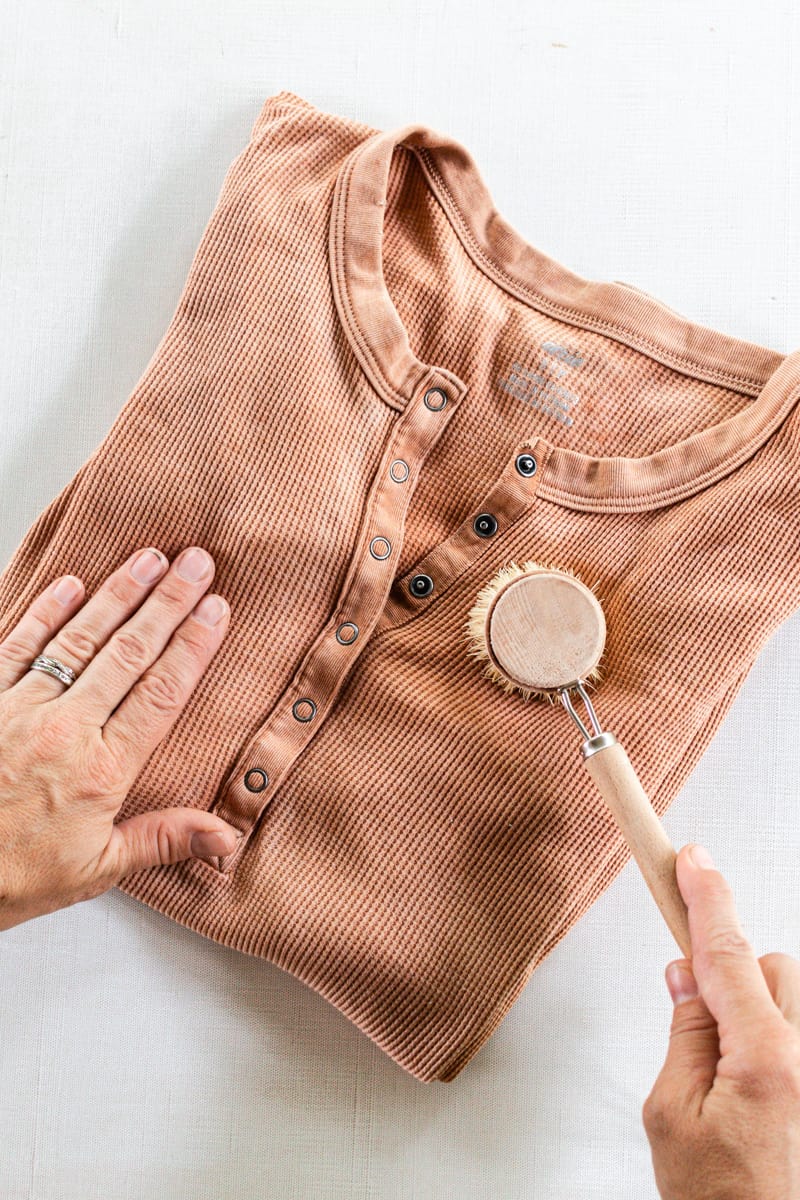Baking soda and vinegar, two everyday household items, have long been known for their prowess in cleaning and various other applications.
However, these ingredients create a powerful and versatile concoction that can tackle numerous tasks effectively.
The synergy between baking soda and vinegar from household cleaning to cooking, unveils many remarkable practical and environmentally friendly uses.
This article provides information on amazing things you can do with baking soda and Vinegar. Carefully read through and make the best use of these two household mixtures.
Table of contents
- What happens when you mix Baking Soda and Vinegar?
- Are Vinegar and Baking Soda Dangerous?
- 10 Amazing Uses for Baking Soda and Vinegar
- 1. They are Natural Cleaning Power:
- 2. They Serve as Drain Unclogging Solution
- 3. Baking Soda and Vinegar can be Use as Deodorizing Agent:
- 4. Oven and Microwave Cleaner:
- 5. Fruit and Vegetable Wash:
- 6. DIY All-Purpose Cleaner:
- 7. Fabric Softener Replacement:
- 8. Fire Extinguisher:
- 9. Skin Care Aid:
- 10. Cooking and Baking Enhancer:
- FAQs on 10 Uses for Baking Soda and Vinegar
- Conclusion
- References
- Recommendations
What happens when you mix Baking Soda and Vinegar?
When you mix baking soda (sodium bicarbonate) with vinegar (acetic acid), you get a chemical reaction that produces carbon dioxide gas, water, and sodium acetate. This reaction is known as an acid-base reaction.
The carbon dioxide gas is what makes the mixture fizz and bubble. The bubbles rise to the surface and form foam. The water and sodium acetate are dissolved in the solution.
The amount of carbon dioxide gas produced depends on how much baking soda and vinegar you mix. The more baking soda and vinegar you use, the more carbon dioxide gas will be produced.
The chemical reaction between baking soda and vinegar can be used for a variety of purposes, including:
- Cleaning: The carbon dioxide gas can help to clean surfaces and remove dirt and grime.
- Cooking: The carbon dioxide gas can be used as a leavening agent in baking.
- Science experiments: The reaction between baking soda and vinegar can be used to demonstrate the principles of chemistry.
Here is the chemical equation for the reaction between baking soda and vinegar:
NaHCO3 + CH3COOH → CO2 + H2O + CH3COONa
This equation shows that one sodium bicarbonate reacts with one acetic acid molecule to produce one carbon dioxide molecule, water molecules, and sodium acetate molecule.
The reaction between baking soda and vinegar is a safe and straightforward reaction that can be done at home. However, always wearing safety glasses and gloves when working with chemicals is essential.
Read Also: How To Remove Gel Nail Polish With Sugar
Uses of Baking Soda
Baking Soda (Sodium Bicarbonate):
- Abrasive Cleaning: Baking soda’s gentle abrasiveness makes it practical for scrubbing surfaces without scratching. It’s excellent for cleaning sinks, tubs, and stovetops.
- Deodorizing: It helps neutralize odors in carpets, refrigerators, and trash cans. Sprinkling baking soda before vacuuming or leaving an open box in the fridge can absorb unwanted smells.
- Stain Removal: Baking soda can assist in lifting stains on countertops and cutting boards, and even as a gentle laundry booster.
Uses of Vinegar (Acetic Acid):
- Disinfectant: Due to its acidic nature, vinegar can be a natural disinfectant against certain bacteria and germs on surfaces like kitchen countertops or bathroom fixtures.
- Descaling: Vinegar’s acidity makes it helpful in removing mineral deposits or limescale buildup in kettles, coffee makers, and showerheads.
- Streak-Free Cleaning: When diluted with water, it’s excellent for cleaning windows, mirrors, and glass surfaces, leaving them streak-free.
Are Vinegar and Baking Soda Dangerous?
In their pure form, vinegar and baking soda are not considered dangerous. However, taking precautions when mixing them is essential, as they can produce a chemical reaction that generates carbon dioxide gas.
As you might expect, this can cause the mixture to fizz and bubble vigorously, and it is essential to take steps to avoid inhaling the gas or getting it in your eyes.
Here are some safety tips for mixing vinegar and baking soda:
- Wear safety glasses and gloves. This will protect your eyes and hands from any splattering liquid.
- Do the mixing in a well-ventilated area. This will help to dissipate the carbon dioxide gas and prevent you from inhaling it.
- Don’t mix baking soda and vinegar in a closed container. The pressure from the gas can build up and cause the container to explode.
- Don’t mix baking soda and vinegar in your mouth. The reaction can produce a burning sensation and may even cause damage to your teeth.
If you follow these safety tips, you can enjoy the fizzy reaction between vinegar and baking soda without any problems.
10 Amazing Uses for Baking Soda and Vinegar
Here are ten uses of baking soda and vinegar you need to know:
1. They are Natural Cleaning Power:
Baking soda and vinegar are two everyday household items known for their natural cleaning abilities. They work well separately and sometimes together to clean various surfaces in your home.
While they have individual cleaning properties, combining baking soda and vinegar in specific cleaning tasks can enhance their effectiveness. For instance:
- Drain Cleaner: Pouring baking soda down a drain, followed by vinegar, creates a fizzing reaction that can help remove minor clogs and freshen drains.
- Surface Cleaner: Mixing them in a DIY all-purpose cleaner (in separate steps to prevent immediate reaction) can create an effective solution for cleaning countertops, sinks, and surfaces around the house.
2. They Serve as Drain Unclogging Solution
Pour baking soda down a clogged drain, followed by vinegar. This fizzing reaction helps break down debris, clear blockages, and keep gutters fresh.
Here’s how to use baking soda and vinegar to unclog a drain:
- Pour 1/2 cup of baking soda down the drain.
- Follow with 1/2 cup of vinegar.
- Cover the drain with a stopper or plug.
- Let the mixture sit for 15-30 minutes.
- Flush the drain with hot water.
3. Baking Soda and Vinegar can be Use as Deodorizing Agent:
When vinegar and baking soda are mixed, a potent deodorizing agent is produced that may effectively remove even the strongest smells.
In addition to vinegar’s acidic qualities, baking soda acts as a natural odor absorber to assist in neutralizing and getting rid of offensive odors. Together, these two powerful agents work well and offer a greener substitute for harsh deodorizers that contain many chemicals.
The adaptability of vinegar and baking soda as deodorizing agents is one of their main advantages. This all-natural solution can neutralize pet scents, freshen up a refrigerator, and remove musty odors from shoes.
Furthermore, baking soda and vinegar truly operate to eliminate the root of the problem, in contrast to synthetic air fresheners that only cover up scents with potent perfumes.
Read Also: 20 Amazing Uses for Baking Soda
4. Oven and Microwave Cleaner:
Baking soda and vinegar combined create a powerful cleaning solution that eliminates grease, grime, and stubborn food stains without harsh chemicals.
Baking soda acts as an abrasive agent to scrub away tough residues, while vinegar’s acidic properties help dissolve dirt and disinfect surfaces. This dynamic duo cleans effectively and leaves a fresh scent without artificial fragrances.
One of the key advantages of using baking soda and vinegar as oven and microwave cleaners is their eco-friendliness. Unlike commercial cleaning products that may contain harmful toxins, this homemade solution is non-toxic and safe for the environment.
Additionally, it’s a cost-effective alternative that saves you money while delivering impressive results. Furthermore, using natural ingredients reduces exposure to synthetic chemicals that could pose health risks when inhaled or come into contact with food surfaces.
5. Fruit and Vegetable Wash:
When removing pesticides and dirt from your fresh produce, baking soda and vinegar can be powerful allies. Baking soda acts as a gentle scrubbing agent, while vinegar’s acidity helps to remove bacteria and residues from the surface of fruits and vegetables.
By combining them in a simple wash, you can create an effective and natural solution for cleaning your produce.
One key advantage of using baking soda and vinegar for fruit and vegetable wash is their affordability and availability.
These common household items are inexpensive, making them an accessible option for anyone looking to clean their produce without relying on chemical-laden commercial products.
6. DIY All-Purpose Cleaner:
DIY all-purpose cleaner using baking soda and vinegar is a popular natural cleaning method. However, when combined in the same container, these ingredients react due to their opposing pH levels, producing carbon dioxide, gas, and water. This reaction could diminish their cleaning effectiveness if stored together for an extended period.
Here’s a method to use them effectively as an all-purpose cleaner:
DIY All-Purpose Cleaner:
Ingredients:
- 1 cup vinegar
- 1 tablespoon baking soda
- 1 gallon of water
Instructions:
- Mix Separately: Pour the vinegar into a spray bottle. In a separate bowl, dissolve the baking soda in a small amount of water.
- Combine Safely: Slowly add the dissolved baking soda mixture to the vinegar spray bottle. There might be some fizzing due to the reaction, so do this slowly and carefully.
- Add Water: After the fizzing settles, gently mix the rest of the spray bottle with water.
- Use: This solution can be an all-purpose cleaner for countertops, sinks, and other surfaces. Spray on the surface, let it sit for a few minutes, then wipe clean with a cloth or sponge.
Read Also: How To Remove Black Spot On Teeth
7. Fabric Softener Replacement:
Using a mixture of baking soda and vinegar as a fabric softener replacement isn’t a typical practice.
Baking soda is sometimes used in laundry to help neutralize odors and soften clothes by slightly adjusting the pH level in the wash water. However, it doesn’t function in the same way as a traditional fabric softener.
Vinegar, mainly white vinegar, is occasionally used as a natural fabric softener due to its acidic properties.
It can help remove detergent residue from clothes, possibly contributing to softer fabrics after washing. However, the vinegar scent might linger initially but usually dissipates as the clothes dry.
When combined, baking soda and vinegar undergo a chemical reaction that produces carbon dioxide gas and water.
This reaction might reduce the effectiveness of both ingredients for softening fabrics. Additionally, the fizzing and bubbling produced by this mixture could cause a mess in the washing machine.
8. Fire Extinguisher:
Putting out fires with a fire extinguisher made of vinegar and baking soda is neither advisable nor efficient.
By releasing carbon dioxide, baking soda (sodium bicarbonate) can put out tiny grease fires, smothering the flames by severing their oxygen supply. Nevertheless, acetic acid, or vinegar, is a weak acid that cannot put out a fire.
A chemical interaction between vinegar and baking soda results in the production of carbon dioxide gas. Although this reaction produces bubbling and fizzing, which makes for a fun science experiment, it does not have an efficient fire-extinguishing substance.
It is safer to put out tiny grease fires in the kitchen with a fire extinguisher designated for kitchens (a Class K extinguisher), to carefully cover the fire with a metal lid, or to use baking soda alone to put out the flames.
Read ALSO: How To Remove Someone From Snapchat Group
9. Skin Care Aid:
For distinct reasons, vinegar and baking soda are sometimes used independently in skincare routines.
Because baking soda has a slight abrasiveness, it can be used as a mild exfoliator to help remove dead skin cells.
It’s crucial to use it carefully, though, as it might upset some people’s pH balance and irritate their skin, particularly those with sensitive skin.
Because of its acidic qualities, vinegar—especially apple cider vinegar—is occasionally diluted and used as an astringent or toner. It is thought to assist in regulating oiliness, balancing the skin’s pH, and evening out skin tone.
But it’s not usually advised to use vinegar and baking soda as a skincare combination. The acid-base combination produces a fizzy response, which may counteract their advantageous effects.
Furthermore, the mixture can be too abrasive for the skin, which could lead to inflammation or other harmful effects.
Use caution while applying everyday home items to your skin, such as vinegar and baking soda.
It is advised to conduct patch tests and get advice from a dermatologist or skincare specialist to ensure these substances are safe and appropriate for your skin type.
Read Also: 15 Best Alcohol for College Students | Ranking
10. Cooking and Baking Enhancer:
Baking soda and vinegar are commonly used in cooking and baking, but they serve different purposes and aren’t typically combined as enhancers due to their chemical reaction.
Baking soda is a leavening agent that reacts with acidic ingredients like buttermilk or lemon juice to create carbon dioxide, which helps baked goods rise.
Conversely, vinegar is acidic and can react with baking soda to create bubbles, but it’s not commonly used as a baking enhancer due to its strong flavor and the need to balance its acidity.
However, specific recipes might be used separately for different purposes. Baking soda might help cookies or cakes rise, while vinegar can be used in particular recipes for its acidic properties, such as in pickling or salad dressings.
But as a mixture, they’re not typically employed together as enhancers in cooking or baking.
FAQs on 10 Uses for Baking Soda and Vinegar
Yes, you can use them independently or in combination in specific situations, but you should take caution because of their chemical interaction that yields water and carbon dioxide gas. This response may diminish their cleaning efficacy.
Because vinegar is acidic, it should not be used on naturally occurring stone surfaces like granite or marble, as it may etch the stone. Although generally harmless, baking soda may be harsh on sensitive surfaces.
It’s a well-liked technique for unclogging small drains. Pour vinegar down the drain first, then baking soda. Odors can be eliminated and blockages cleared by the foaming action.
In isolation, sure. While baking soda helps soften garments and lessen soap residue during the wash cycle, vinegar can be a fabric softener during the rinse cycle.
Conclusion
The combined potential of baking soda and vinegar transcends traditional uses, offering a natural, cost-effective, and eco-friendly solution for numerous household tasks. Their versatility spans from cleaning and deodorizing to cooking and personal care.
Harnessing the power of this dynamic duo not only simplifies everyday chores but also reduces reliance on harsh chemicals, promoting a more sustainable lifestyle. Experimenting with these 10 amazing uses illuminates the magic that unfolds when these simple household staples join forces.





